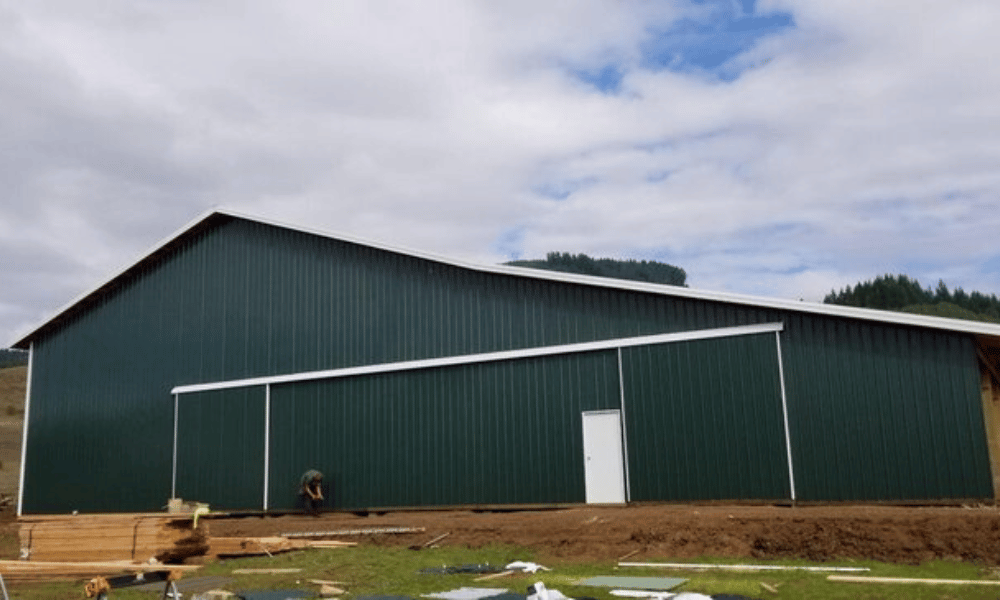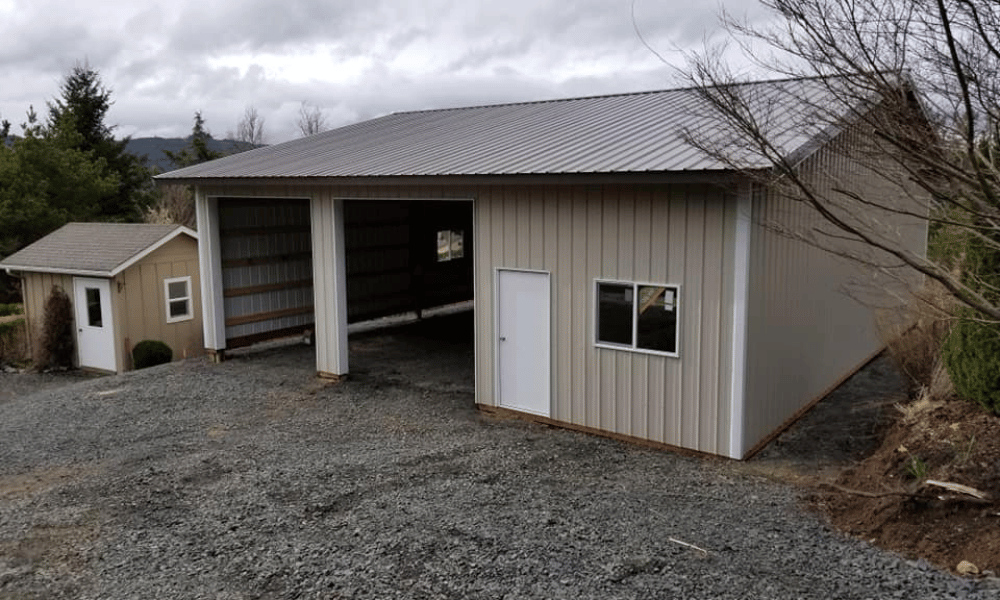Introduction
When it comes to building structures that are both functional and aesthetically pleasing, pole barns have carved out a niche that is hard to beat. These versatile buildings can serve a multitude of purposes—from storage spaces to workshops, or even as event venues. However, one critical aspect that often gets overlooked in the design process is accessibility. Maximizing accessibility with smart layouts in your pole barn is not just about ensuring that everyone can use the space; it’s about enhancing the overall usability and functionality of the barn.
In this article, we will delve deep into how you can create an accessible pole barn layout that meets your needs while being welcoming for all users. We’ll cover everything from planning and construction tips to specific design elements that promote easy movement within such structures.
Table of Contents
Understanding Accessibility in Pole Barns- What Does Accessibility Mean? Why Is Accessibility Important?
- Open Space Design Multi-Functional Areas
- Assessing Your Needs Choosing the Right Location
- Simple vs Complicated Layouts The Importance of Flow
- Building Codes and Regulations Choosing Materials Wisely
- Natural vs Artificial Lighting The Role of Color Schemes
- Door Size and Type Ramps vs Steps
- Shelving Heights Mobile Storage Units
- Restroom Requirements Kitchenette Ideas
Safety Features in Your Pole Barn
- Fire Exits and Alarms Non-Slip Flooring Options
Creating Outdoor Spaces Adjacent to Your Pole Barn
- Patios or Decks for Added Functionality Landscaping Considerations
Technology Integration for Enhanced Use
- Smart Home Features Security Systems
Customizing the Interior Aesthetics
- Personal Touches That Make It Yours Using Art to Enhance Spaces
Sustainable Practices in Construction
- Eco-Friendly Materials Energy Efficiency
Future-Proofing Your Pole Barn Design
- Planning for Growth Flexibility in Layout
Case Studies: Successful Accessible Pole Barns
- Inspiration from Real Projects Lessons Learned
Frequently Asked Questions (FAQs) About Pole Barn Accessibility
Conclusion: A Vision For an Accessible Future
Understanding Accessibility in Pole Barns
What Does Accessibility Mean?
When we talk about accessibility, we’re referring to how easily individuals can enter, navigate, and utilize a space without impediments—especially those who may have disabilities or mobility challenges.
Why Is Accessibility Important?
Accessibility is crucial not just for compliance with legal standards but also for fostering an inclusive environment where everyone feels welcome and safe.
Key Features of a Smart Layout

Open Space Design
A smart layout often incorporates open spaces which allow for free movement without obstacles getting in the way.
Multi-Functional Areas
Designing spaces that serve multiple purposes can maximize utility while minimizing clutter.
Planning Your Pole Barn Design
Assessing Your Needs
Before diving into construction, consider what you plan to use your pole barn for—storage, workshops, events? This will guide your design decisions.
Choosing the Right Location
Location matters! Ensure easy access from main roads or pathways to accommodate all users.
Floor Plans That Work
Simple vs Complicated Layouts
While complex designs may seem appealing, simpler layouts often prove more functional.
The Importance of Flow
A well-thought-out flow means users can easily move through the space without confusion or obstruction.
Accessibility Considerations During Construction
Building Codes and Regulations
Familiarize yourself with local codes regarding accessibility; these guidelines exist for good reason!
Choosing Materials Wisely
Select materials that are durable yet easy to maintain—think slip-resistant flooring to enhance safety!
Lighting and Visibility
Natural vs Artificial Lighting
Natural light improves mood and visibility, so consider large windows where possible.
The Role of Color Schemes
Bright colors can help illuminate darker areas while making the space feel larger!
Entryways and Exits
Door Size and Type
Ensure doors are wide https://complete-limit.uncrn.co/blog/pole-structures-for-hobbyists-vs-traditional-garage-spaces/ enough—36 inches is often recommended—to accommodate wheelchairs or moving equipment smoothly.
Ramps vs Steps
Ramps should be gentle slopes; consider placing them at every entry point if possible!
Storage Solutions That Enhance Accessibility
Shelving Heights
Adjustable shelving units allow users to store items at comfortable heights based on their physical capabilities.
Mobile Storage Units
Consider using carts or wheeled units that make transporting items easier.
Utilities and Amenities for Comfort
Restroom Requirements
If your pole barn will host events or gatherings, ensure there’s at least one accessible restroom facility available.
Kitchenette Ideas
A small kitchenette could provide convenience during events or gatherings—think about including an accessible counter height!
Safety Features in Your Pole Barn
Fire Exits and Alarms
Plan multiple exit routes; clearly mark them with appropriate signage!
Non-Slip Flooring Options
Use textured flooring materials in high-traffic areas to prevent slips and falls!
Creating Outdoor Spaces Adjacent to Your Pole Barn
Patios or Decks for Added Functionality
Outdoor areas provide additional space for gatherings without crowding indoors—think BBQs or parties!
Landscaping Considerations
Choose native plants that require minimal maintenance but add beauty around your structure!
Technology Integration for Enhanced Use
Smart Home Features
Automating lights or heating/cooling systems can improve comfort while simplifying operation!
Security Systems
Implement surveillance cameras depending on usage frequency—it adds peace of mind knowing your property is secure!
Customizing the Interior Aesthetics
Personal Touches That Make It Yours
Incorporate personal items like family photos or memorabilia showcasing interests—it creates warmth within the structure!

Using Art to Enhance Spaces
Art installations could serve as conversation starters during gatherings; they add character too!
Sustainable Practices in Construction
Eco-Friendly Materials
Consider recycled materials wherever possible—you’ll reduce waste while creating something beautiful!
Energy Efficiency
Installing solar panels could significantly lower energy costs; it’s worth considering if you plan long-term!
Future-Proofing Your Pole Barn Design
Planning for Growth
Your initial plans shouldn’t limit future possibilities—leave room for expansion if needed later on!
Flexibility in Layout
Design adaptable spaces so they can evolve alongside changing needs over time!
Case Studies: Successful Accessible Pole Barns

Here, we’ll take a closer look at several projects demonstrating effective use cases emphasizing accessibility features prominently integrated throughout each design process!
Frequently Asked Questions (FAQs) About Pole Barn Accessibility
What are some common features included in accessible pole barns?
Some common features include wider doorways, ramps instead of stairs, open floor plans, adjustable shelving heights, etc.
How do I know if my pole barn complies with local accessibility codes?
Check with local zoning boards or building departments—they'll have information regarding compliance standards!
What materials should I avoid when building an accessible pole barn?
Avoid slick flooring surfaces which increase slip risks; instead opt for textured options!
Can I customize my existing pole barn layout?
Absolutely! Depending on structural integrity modifications may be feasible—consult professionals before proceeding!
* Are there grants available specifically aimed at improving accessibility?
Yes! Various governmental programs offer funding opportunities tailored towards enhancing inclusionary practices across facilities!
6. Is it worth investing extra money upfront into making my pole barn more accessible?
Investing initially leads towards long-term benefits—not only does it enhance usability but also increases property value over time!
Conclusion: A Vision For an Accessible Future
Building a pole barn shouldn't just be about aesthetics; it's essential also consider functionality concerning all potential users’ needs moving forward—that's why focusing efforts maximizing accessibility through smart layouts becomes vital incorporating elements discussed here today ensures comprehensive approach toward creating welcoming environments anyone could utilize comfortably regardless physical limitations present!